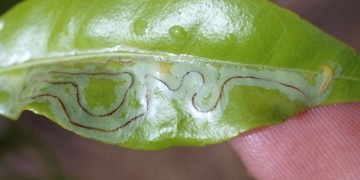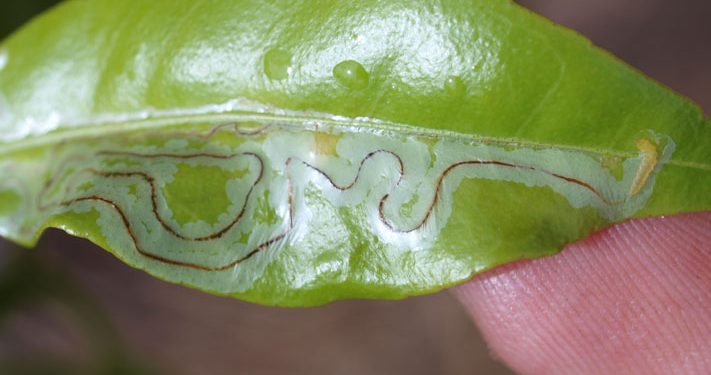The Citrus Leafminer (Phyllocnistis citrella) is a common pest that causes significant damage to citrus trees by tunneling and feeding on new leaves. In this article, we will discuss the latest research and methods for controlling the Citrus Leafminer infestation, including cultural practices, biological control, and chemical treatments.
According to the University of California, the Citrus Leafminer is a major pest of citrus crops worldwide, causing damage to the new leaves, which may lead to reduced fruit yields and poor tree growth. The damage caused by the Citrus Leafminer can also make the tree more susceptible to other pests and diseases.
Cultural practices such as pruning, fertilization, and proper irrigation can help to manage the Citrus Leafminer population by creating an unfavorable environment for the pest. Additionally, introducing natural enemies such as parasitoids and predators can also help to control the Citrus Leafminer population.
Chemical treatments are commonly used to control the Citrus Leafminer infestation. Insecticides such as abamectin, spinosad, and neonicotinoids have been found to be effective in controlling the Citrus Leafminer population. However, it is essential to use the appropriate dosage and application methods to minimize the impact on non-target organisms and the environment.
In conclusion, the Citrus Leafminer infestation is a serious problem for citrus growers worldwide. Implementing a combination of cultural practices, biological control, and chemical treatments can help to effectively manage the Citrus Leafminer population and reduce the damage caused by this pest.
Tags: #CitrusLeafminer #pestcontrol #agriculture #farming #culturalpractices #biologicalcontrol #chemicaltreatments #insecticides #parasitoids #predators #citruscrops #environment


































